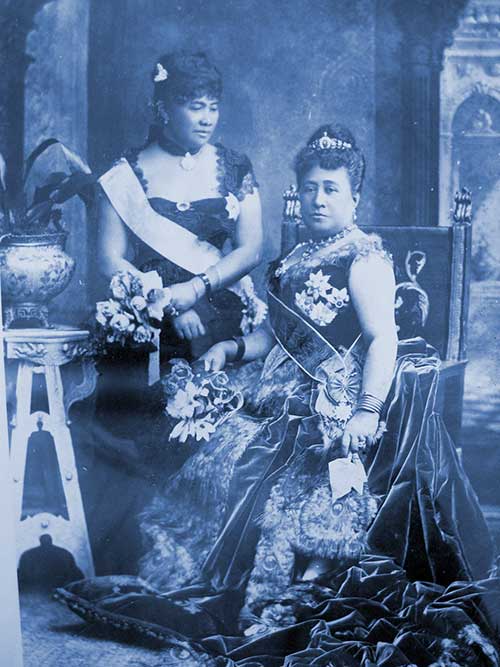
On January 17, 1893, a group of American businessmen and sugar planters forced Queen Lili‘uokalani to abdicate her throne. According to Rickard, the popularity of gold enameled bracelets surged following the overthrow, perhaps worn to express a people’s grief. “Where fashion once followed politics in Great Britain, so did it now among the women of Honolulu,” write Rickard.
Today the bracelets have become a symbol of Hawaiian history and a loving tradition connecting generations.
Maelia Loebenstein Carter will never forget the story of her great-grandfather’s marriage proposal to her great grandmother.
“Albert Loebenstein was a German immigrant who came to Hawai‘i around the late 1800s,” explains Maelia. “He later became a part of the Hawai‘i Territorial Legislature, and the story goes that whenever he would sign the bills, instead of writing his signature, he would write, ‘If not why not.’”
When Albert proposed to Maelia’s great-grandmother Mary Kaliko Spencer, he handed her not a ring, but a gold bracelet embellished with those same four words. Maelia’s grandfather proposed to her grandmother Mae Loebenstein with that same bracelet, later engraving it with the date of his proposal — which was also her twentieth birthday: May 9, 1931. Today it adorns Maelia’s wrist.
“My grandmother wore it for over sixty years,” says Maelia. “I always feel a little closer to her and my great-grandmother when I wear it.”





